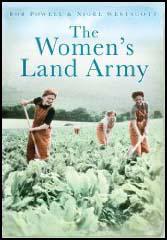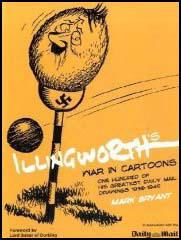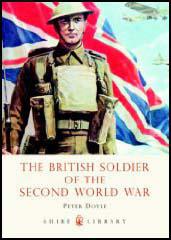Spartacus Review
Volume 37: 23rd September, 2009
Second World War

Title: The Women's Land Army
Author: Bud Powell & Nigel Westacott
Editor:
Publisher: History Press
Price: £12.99
Bookshop: Amazon
Spartacus Website: Woman's Land Army
Category:
This book brings together a wealth of black and white pictures which together record not only the operations of the Women's Land Army (WLA) but also scenes of the countryside between 1939 and 1950. Drawn from the worldwide albums of many ex-land girls at a time when film was rationed and photography monitored, this collection offers a fascinating insight into the people and places associated with the WLA. Many of these photographs have never been published in book form and so offer a unique record of the organisation. Every image is captioned, providing names and dates where possible, and revealing historical anecdotal detail which gives life to the scenes and personalities captured through the camera lens. Presenting training, occupations and the social activities of the Land Army women, this absorbing collection will not only evoke many wartime memories, but will also inspire readers through these images of hope, strength and unity.

Title: Illingworth's War in Cartoons
Author: Mark Bryant
Editor:
Publisher: Grub Street
Price: £14.99
Bookshop: Amazon
Spartacus Website: Leslie Illingworth
Category:
Leslie Illingworth was one of the most distinguished British political cartoonists of the 20th century and remains for many 'the cartoonists' cartoonist. Yet though his career spanned more than 50 years - longer than either of his great contemporaries Sir David Low and Vicky - very little has been published about his life and works. Some of Illingworth's best cartoons were published for the "Daily Mail" during the Second World War (examples were even found in Hitler's bunker) and this book collects together for the first time 100 of his greatest to mark the 70th anniversary of the outbreak of the conflict. Illingworth joined the "Daily Mail" soon after the war started, and remained with the paper for 30 years. A superb draughtsman and an acute political commentator, he also drew weekly for "Punch" for two decades. The magazine's editor Malcolm Muggeridge even felt that his cartoons were better than Low's: 'Illingworth's go deeper, becoming, at their best, satire in the grand style rather than mischievous quips'. A student under Sir William Rothenstein at the Royal College of Art during one of its most brilliant periods - fellow students included Barbara Hepworth, Henry Moore and Eric Ravilious - he left to become full-time political cartoonist on Wales' national paper, the Western Mail, at the age of only 19. A founding member and the first President of the British Cartoonists' Association in 1966, he was made an Honorary Doctor of Literature by the University of Kent in 1975. In addition he drew for American publications - including a famous cover for "Time" magazine - and was officially presented to US President L.B. Johnson in 1968. This unique collection is divided into chapters covering the war year-by-year and the book draws extensively on archive material held at the National Library of Wales and only recently catalogued in association with the British Cartoon Archive at the University of Kent. It also contains the first biography of Illingworth based on unique access to hitherto unavailable family records.

Title: The British Soldier of the Second World War
Author: Peter Doyle
Editor:
Publisher: Shire Publications
Price: £5.99
Bookshop: Amazon
Spartacus Website: British Army
Category:
This is the story of the British soldier in the Second World War; a story of endurance through the long years of conflict, in theatres as diverse as Europe, the Western Desert, the Arctic and the Far East. It is the real story of the British Tommy, truthful and unglorified. Beginning on the road to Dunkirk, Peter Doyle traces the life of the British Soldier from 1939 through the development of Fortress Britain and the rearming of troops to open the ‘Second Front’ in Europe. With reference to military equipment, literature, art and ephemera, he conjures an image of what it was like to serve in the British Army during this gruelling war. He tells how troops would fight in the desert, on the long road that led to victory in Alamein, and of the battles against the Japanese in the Far East.
